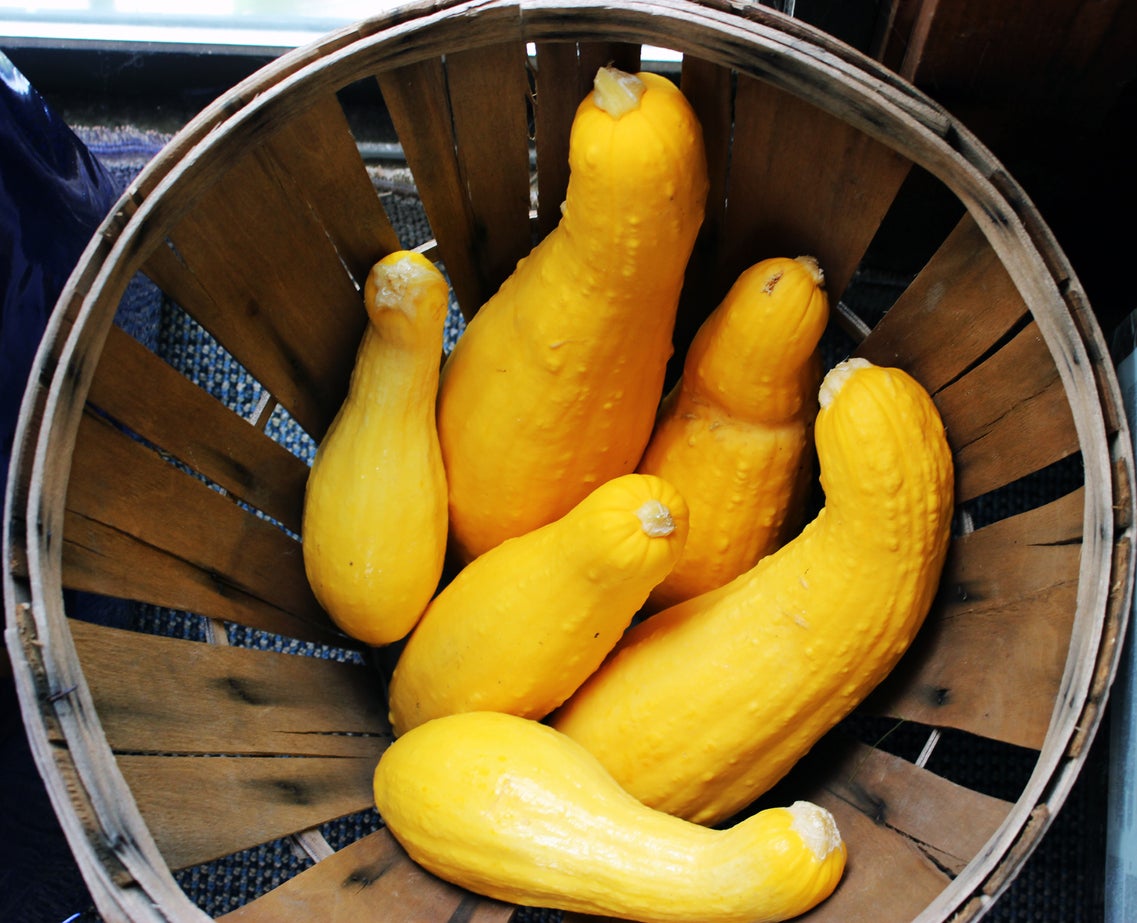Crookneck Squash Varieties: How To Grow Crookneck Squash Plants


Growing crookneck squash is common in the home garden. Ease of growing and versatility of preparation make crookneck squash varieties a favorite. If you’re asking “what is crookneck squash?”, then this article can help. Click here for more info on growing crookneck squash.
What is Crookneck Squash?
Yellow crookneck squash is a type of summer squash, closely related to the yellow straightneck squash. Varieties may be smooth or ridged. Usually shaped somewhat like a bottle, it grows in summer, sometimes prolifically, and is often a top-producer in the garden.
Numerous recipes are available online for its use. Crookneck squash is often breaded and fried as a delicious side, used in a range of casseroles, and is a great healthy ingredient to include in those green smoothies. Season and grill slices of crookneck, then top with cheese and bacon bits. Or use your imagination for cooking and serving. This squash may be eaten raw, steamed, or stewed. It may be canned or frozen, too, if the harvest produces more than you can use at one time.
How to Grow Crookneck Squash
Crookneck squash plants are warm season growers. Seeds germinate at 85 degrees F. (29 C.). Because of the popularity of the crop, some have devised ways to get germination earlier. Plant seeds in an already prepared full sun spot and cover the surrounding soil with black plastic or dark mulch or use row covers to hold in the heat. Covering should be light so the seeds can pop through upon germination.
You may also start crookneck squash plants from transplants that you purchase or start indoors early on. Plant seeds or transplants in well-draining, nutrient-rich soil amended with compost worked in 3 inches (7.5 cm.) down. A pH of 6.0 to 6.8 is most productive. Many long-time growers plant squash in hills, raised several inches (5 to 10 cm.) above the row. When planting from seed, plant four seeds, then thin twice to get the strongest grower.
Keep the soil moist and water in a consistent manner.
Harvesting Crookneck Squash
Pick them when they’re young and developed, with a glossy skin and still tender. Harvest the squash by cutting or breaking, leaving a portion or all the stem on the squash. Learning when to pick a crookneck squash may begin as an experiment if this is your first time growing them. Letting them grow too long results in a hard, unusable squash.
Gardening tips, videos, info and more delivered right to your inbox!
Sign up for the Gardening Know How newsletter today and receive a free copy of our e-book "How to Grow Delicious Tomatoes".
Crooknecks that are too mature have a hard rind and large seeds, compromising the quality of the fruit. When you’ve picked one from the bush, another will soon develop to take its place. It is most important to harvest the first flush of crookneck squash so they will continue to develop. This crop will keep producing all summer as long as bushes are healthy, and fruits are harvested in a timely manner. They are usually ready in 43 to 45 days.
Prepare for your harvest, as this crop doesn’t hold for long when picked, often no more than three to four days in the refrigerator.
Now that you’ve learned how to grow crookneck squash, use them as your family prefers and be sure to put some up for winter.

Becca Badgett was a regular contributor to Gardening Know How for ten years. Co-author of the book How to Grow an EMERGENCY Garden, Becca specializes in succulent and cactus gardening.
-
 Moody Blooms For Spring: 8 Types Of Black Flowers To Add Drama To Spring Displays
Moody Blooms For Spring: 8 Types Of Black Flowers To Add Drama To Spring DisplaysFrom midnight burgundies to inky violets, several types of black flowers can enrich and embolden a spring display. Try these brooding bloomers for a moody garden
By Tonya Barnett
-
 Can Snake Plants Live Outside? Everything You Need To Know For Snake Plants Al Fresco
Can Snake Plants Live Outside? Everything You Need To Know For Snake Plants Al FrescoSnake plants can live outside given the right conditions, but be careful that they don't take over! Learn the best way to use snake plants in your landscape.
By Mary Ellen Ellis